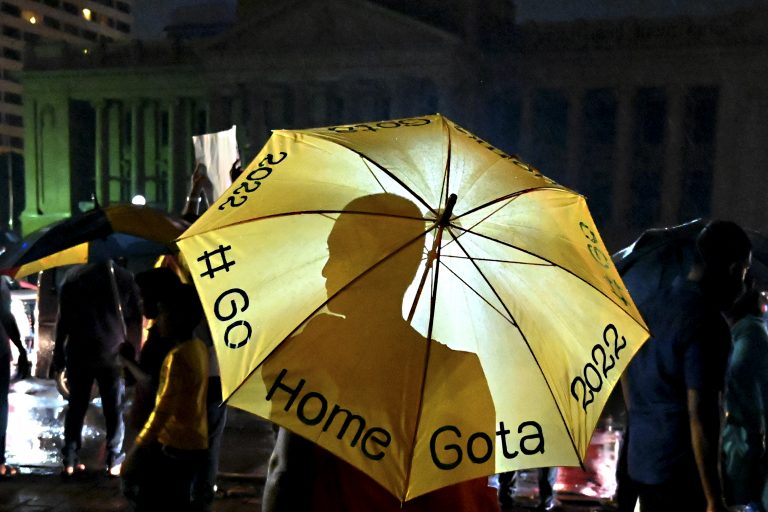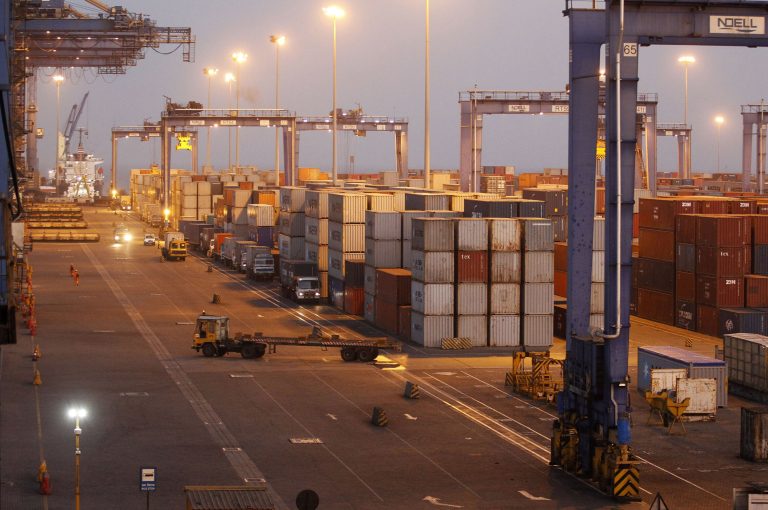In the midst of a financial, social and political crisis not seen since Sri Lanka’s independence in 1948, thousands of protesters are relentlessly calling for resignations of key political figures that they say are responsible for the country’s plights.
The country is grappling with shortages in food, fuel, medicine and electricity paralyzing large swaths of the country and angering citizens. The shortages have pushed many Sri Lankan’s to the brink of survival.
The situation is dire and no part of the country — home to some 22 million people — has escaped unscathed. Power cuts darken homes and businesses for up to eight hours a day forcing people to cook on scavenged wood. Miles-long lineups form outside gas stations and schools and newspapers have suspended operations because they can’t afford the paper needed to print, according to The Guardian.
The situation has forced thousands of citizens from all walks of life into the streets. The protests have no organised leadership and have formed organically with some calling the revolt “Sri Lanka’s Arab Spring.”
Calls for president Gotabaya Rajapaksa, typically referred to as Gota, to resign have peaked with many telling the embattled leader to “go home” a reference to his dual citizenship with the United States.
Protesters occupy president’s office entrance
Success
You are now signed up for our newsletter
Success
Check your email to complete sign up
As protests rage across the country some have occupied the entrance of the president’s office, located in the nation’s commercial capital and largest city of Colombo, for nearly a week demanding to be heard.
On April 13, the Sri Lankan prime minister offered to speak with the protesters as the government’s opposition threatens to bring a no-confidence motion against the incumbent government.
“If protesters are ready to discuss their proposals to resolve the challenges currently facing the nation, then the prime minister is ready to invite their representatives for talks,” the Sri Lankan prime minister’s office said on Wednesday.
However, the crisis may have grown too deep for talks to be constructive.
One of the protesters occupying the entrance, Sanjeewa Pushpakumara, a 32-year-old ex-soldier, told the Associated Press (AP), “We will stay on, we will leave only when we have chased them out.”
“We will send them home, take the people’s money back and send them to jail,” said Pushpakumara. “These people are destroying the country that we saved and it is sad to see the army and police protecting them.”
Pushpakumara told AP that he fought during the final days of Sri Lanka’s civil war which the government won in 2009 following two and a half decades of conflict.
Gota and his older brother Mahinda were credited with the victory.

On the brink of bankruptcy
The small island nation is on the brink of bankruptcy, burdened with an estimated $25 billion in foreign debt, with some $7 billion due to be paid back this year alone.
The financial crisis has angered Sri Lanka’s younger generation, who are furious and fearful for their futures and blame the country’s older generation for the crisis with the protester’s rage focused on the country’s Rajapaksa family, who have been in power for most of the past two decades.
The protesters point to devastating economic decisions made by the government as the source of the country’s troubles such as scrapping austerity measures, cutting taxes to just 8 percent of GDP, printing vast amounts of money pushing up inflation, refusing to restructure the country’s mounting foreign debt and using up all the country’s foreign reserves.
Discussions with the International Monetary Fund (IMF) are expected later this month to seek some relief and the government has reached out to China and India for emergency loans to secure food and fuel.
The crisis has been further fueled by the COVID-19 pandemic which severely impacted the country’s tourism sector which makes up around 10 percent of the nation’s gross domestic product (GDP).
According to the Times of India, Sri Lanka needs at least $7 billion to simply service its debt load this year, with just $19 billion left in the country’s reserves as of the end of March.
China poised to profit
China is Sri Lanka’s largest debt holder with around 10 percent of the island’s foreign debt followed by Japan and India.
According to a Chatham House Report, between 2006 and 2019 China invested almost $12 billion in the island nation. In 2020 the debt Sri Lanka owed China amounted to six percent of the country’s GDP.
China’s investment in Sri Lanka has often been portrayed as “debt trap diplomacy.”
Since 2005, the Sri Lankan government has borrowed heavily from Beijing under China’s Belt and Road Initiative (BRI) for infrastructure projects, many of which became “white elephants,” yielding little profit and requiring much care and expense.
One such project was the expansion of the Hambantota port in South Sri Lanka, a project that was financed with US$1-billion in Chinese investments.
At the time of the investments many claimed that Sri Lanka risked being stuck in a “debt trap” with China and it appears this has come to fruition.
As Sri Lanka’s debts grew dramatically the Sri Lankan government was coerced into letting China Merchants lease the Hambantota port for 99 years in exchange for more loans from the Chinese government.
China tends to focus on financing impoverished, low-income, or economically troubled nations with loans heavily tied to the Communist Country’s Belt and Road Initiative.
According to AidData, some 40 economically stressed nations have “hidden debt” to Chinese lenders amounting to, in many cases, debts that exceed 10 percent of their GDP.
Other countries, including Laos, Zambia, and Kyrgyzstan, owe China in excess of 20 percent of their GDP.







